#1960s extant garment
Text

Green Silk Dress, ca. 1960, French.
By Madame Grès.
Sotheby’s.
https://www.sothebys.com/en/auctions/ecatalogue/2018/collection-quidam-de-revel-pf1870/lot.52.html
#grès#madame grès#womenswear#dress#silk#pleats#extant garments#green#1960#1960s#1960s dress#french#France#1960s France#Sotheby’s#1960s extant garment
79 notes
·
View notes
Photo
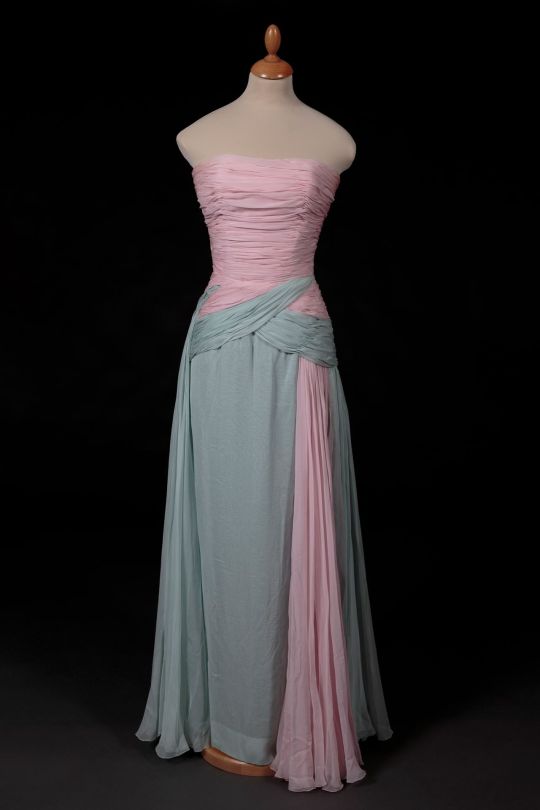
Evening dress by Jean Dessès ca. 1960
From Tessier-Sarou
715 notes
·
View notes
Text
The Snark Is Real This Morning
Oh no! Some patriarchal shill just had an Illegal Corset Thought on the Internet!
Maybe they said "corsets weren't invented by the patriarchy" or "comfort was actually often a prime concern for most women's day-to-day corset-wearing, as evidenced by mid-late 19th century advertising" or "women didn't go around fainting constantly because most of them didn't tightlace most of the time."
Maybe they brought up "survivorship bias in extant clothing" or "rampant photo doctoring in the 19th/early 20th century" or "treating satirical cartoons and fashion plates as gospel" or "museums displaying corsets laced entirely closed when wear patterns and primary sources indicate that lacing gaps were more common in many times and places" These concepts are actually conspiracies invented by Big Misogyny to sell more booze to depressed history workers!
Maybe one of them said that she'd worn corsets, or even that she and/or her friends actually found them more comfortable than bras! Clearly she believes this is representative of all women throughout history and in the present day. Besides, she is suffering from Femininity Poisoning and nothing coming out of her silly, weak little brain can be taken seriously. Remember, it is Peak Feminism to dismiss what a woman says because of her gender presentation!
Don't be fooled! All of these statements mean one thing: they are saying that corsets were and are, always and forever, universally feminist and empowering. That no woman in the past ever found them uncomfortable, and that GNC women didn't exist before 1960 and also are icky. Did they actually say that? Doesn't matter! You know what she Really Meant- you've seen P*rates of the Caribbean and Br*dgerton! Corsets were always torture devices meant to oppress women, and any statement contradicting that clearly means the extreme opposite.
So what's a right-thinking and concerned Internet Citizen to do? You have a few options:
See point above re: femininity. Feminine-presenting women are basically brainless, so if a woman talking about dress history Wears An Skirt, you can just write off whatever she says. Easy peasy! Be sure to say something derogatory about her appearance, so others know why they shouldn't take her seriously.
Accuse them of not knowing their history. Any degrees, professional experience, publications, academic accolades, etc. they may have are irrelevant. Their primary sources are...idk photoshopped or something? Best to ignore them altogether. You have Feelings on your side, and that's far more valuable than any research!
Accuse them of accusing you of being a t*rf. Works especially well if they've said anything about the preponderance of t*rfs expressing your True and Correct views- that just means they're calling everyone who thinks like you a transphobe, duh!
Tell them they're not believing women. If they have cited so-called "realities of historical women's lives," well, that's clearly just the rich elite of any given era (who were also brainrotted by Femininity, natch). If you're a woman, and you say corsets were the spawn of Beelzebub, that should be enough ~evidence~ for anyone!
Appeal to common knowledge. Everyone KNOWS corsets were evil; can they really be DEFENDING a KNOWN HATEFUL OPPRESSIVE HELL-GARMENT?! What is the world coming to! If they ask how exactly everyone knows that and where that collective belief comes from, reply with a snarky GIF and block them. There's just no reasoning with some people.
Call them a tradwife. Are they a tradwife? Irrelevant.
With all these tools in your arsenal, you are now well-equipped to fight the horde of vile corset apologists online. Remember: It's Only Real Oppression If The Oppressed Group Is Miserable 24/7!
718 notes
·
View notes
Note
I’m wondering if you have any examples of Irish clothing from the early 1600s (around 1610-1615)? I haven’t been able to find much from this era so I’d appreciate any sources or museum collections that you could recommend.
Starting this out with the caveat that if you're looking for the same level of detail and precision that we have for English dress history in this period, you are going to be disappointed. The types of English primary sources we have for this period (well-dated detailed paintings, well-preserved rich-people clothing, wills, printed books, etc) just don't exist for Ireland. There also seems to be much less research interest in 16th-17th c. Irish dress history, so there isn't nearly as much for secondary sources (books, articles etc.).
You don't mention if you are interested in a specific region in Ireland. Ireland in the early 17th c. was a pretty heterogeneous place. People in Dublin and Waterford wore English-influenced styles. According to British-appointed solicitor-general Sir John Davies, by 1606 a few of the wealthier people in Connacht had started wearing English dress, but many others were still wearing Irish clothing. Ulster was a mix of Irish who were wearing Irish dress and incoming English and lowland Scots settlers.
All of the extant Irish clothing I know of from the early 17th c. comes from either bogs or archaeological excavations. It looks like you've already seen my post on extant garments at the NMI. The NMI also has a couple of felt hats that might be early 17th c. This one is from Knockfola, Co. Donegal. It originally had a decorative cord or band where the pale line is:

There are also another cóta mór and brat, found on a bog body from Leigh, Co. Tipperary, which I don't think the NMI has on display. I did not bother to include them in my post, because they are so similar to the ones from Killery, Co. Sligo, but the fact that these have been found in multiple places suggests that they were common, widely-used garments.
The other major garment-find from this period is the Dungiven outfit which is in the Ulster Museum. a short video The bright blue thread was added by a modern conservator; it's not original. (Side note: The identification of this outfit has gotten unfortunately politicized. Tartan trews were worn by both the Irish and the Scots during the 17th century (McClintock 1943, Dunlevy 1989). The presence of tartan should not be used to draw conclusions about the ethnicity of the wearer.) The primary publication for this outfit:
Henshall, Audrey, Seaby, Wilfred A., Lucas, A. T., Smith, A. G., and Connor, A. (1961). The Dungiven Costume. Ulster Journal of Archaeology, 24/25, 119-142. https://www.jstor.org/stable/20627382
The one other reasonably-well preserved outfit that has published on is from a child burial from Emlagh, Co. Kerry, now at University College Cork. Shee and O'Kelly give it a late 17th c date, but they largely base this date on the presence of a rather generic-looking comb. IMO the outfit could easily be early 17th c.

The Emlagh gown, photographed on a living 8-year-old child who was wearing a sweater and skirt underneath. (The 1960s was a different time.)
The bodice has a wrap-front closure with a back and button-up sleeves similar in cut to the Killery cóta mór. The skirt is a pleated rectangle with the pleats sewn in vertically, somewhat like the Shinrone gown. Publication:
Shee, E. and O'Kelly, M. (1966). A Clothed Burial from Emlagh, near Dingle. Journal of the Cork Historical and Archaeological Society, 71(213), 81-91.
There are also, frustratingly, a bunch of fragmentary clothing finds at the NMI which might be 17th c, but no one seems to care enough to do publications on them, and NMI Archaeology still does not have their collection on-line, so they are useless to us.
The typical Irish shoe for this period is known as a brogue (also called a Lucas type 5 by archaeologists). broguesandshoes.com has photos, a pattern, and construction information.
Unfortunately, the illustrations from Speed's map are the only images I know of from this specific period.
If you want details on what materials were used, I recommend Susan Flavin's dissertation. It's about the 16th c. economy, but things didn't change that much between 1599 and 1601. free download here
If you don't mind wading through early modern English and a bit of period-typical prejudice, I recommend reading A Discourse of Ireland, by Luke Gernon written in 1620. His description of Irish clothing starts halfway down p. 356.
Finally, if you can find them, Dress in Ireland by Mairead Dunlevy (1st ed. 1989) and Old Irish and Highland Dress by H. F. McClintock (1st ed. 1943, 2nd ed. 1950) are the best books I know of for this period.
12 notes
·
View notes
Text
So @grapejuicegay asked about the colour theory of Teacher Sani and Waree wearing blue and red repectively during the scene where the protestors fake/doll body is burned. I theorised that red stood for progress and change (and generally Ayan), while blue is clearly for Suppalo, tradition and opression. So why would Sani wear blue and Waree red in this fairly pivotal scene? Honestly, I don't think its hugely clear but I'm giving it a guess.
(I go through about 4 hours of research into Thai clothing and colour theory and this post gets long so I'm warning you now.)
In terms of Teacher Waree, the colour of her clothes doesn't seem to matter hugely, its constantly changing and always very vivid colours, but the style stays almost exactly the same. The fabric and cut of her clothes are always almost identical, and are a take on traditional clothing.
Wait, hold up, I started doing a little research to find out more about this style of traditional clothing and it's fascinating. (Before we get into this, for age reference, the actress that plays Waree was born in 1980) So, in 1932, Field Marshal Plaek (yes, that Field Marshall Plaek, who Waree gave us a class on, more on this later) was one of the leaders in part of the People's Party who stage a coup and overthrew the absolute monarchy to create a "constitutional monarchy" where a government and the monarchy work together. In 1938 he becomes the Prime Minister and, as The Eclipse points out, this guy was a military dictator and the monarchy's power was pretty much wiped out. During this term in office, from 1938-1944, he set up some cultural mandates known as the Thai Cultural Revolution, one of which was about Thai dress, in an attempt to modernize and westernize them. From wiki:
"Appropriate dress for Thai people consists of:
"Uniforms, as position and opportunity permits;
"Polite international-style attire;
"Polite traditional attire."
He becomes Prime Minister again for 1948-1957, during which a new King and Queen are sworn in. In the 1960's they feel the need to also try to reform Thai dress. The Queen creates a national Thai costume with 8 separate outfits for women in an attempt to create unity in the Thai identity. One of which is the Thai Chitlada:

One article I read talked about this style being somewhat similar to a men's traditional outfit. Described as "A mandarin-collared, five-button jacket, the Rajpattern was inspired by colonial British dignitaries' style (the biggest of yikes) and brought to Thailand through India". Similar to a Nehru jacket.
Which is wild, on one hand you have a dictator who is all for Thai nationalism trying to modernize clothing by Westernizing it who gets kicked out of his position. On the other a Queen using the help of a French designer to create traditional-inspired modern Thai clothes based on fabrics of extant garments from the Royal Treasury, but with some of the style influenced by uhh.. the british military? If anyone knows more please feel free to tell me, my ask box is always open and my mind is always empty. This is literally a 1am rabbithole of wikipedia and fashion blogs.
Back to Teacher Waree! When she's talking about Plaek and uniforms to the students, Ayan asks her if she thinks students should still wear uniforms to which she says yes, to maintain orderliness. Which is funny to me because she is someone who is wearing probably overly formal clothing in a school which seemingly has some sort of black uniform that she.. doesn't wear. Literally just "I like uniforms" "so does dictator Plaek" "well, I don't wear them!".

So, I feel like generally her outfits are made in a style that represents traditional views, and perhaps the colours are more in line with "traditional femininity". Except that one flashback where they're interviewing Sani for the job and Waree is wearing a Suppalo Suit and honestly maybe they just knew seeing her in actual suits would be too much for my gay brain to handle bc she's just so hot.
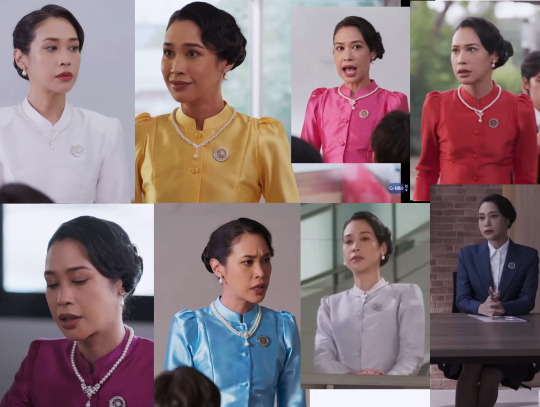
(them mad ms paint skillz)
(Took a break, painted some walls, lost power due to a storm, came back probably loopy from paint fumes and tiredness.. bon appetit)
So, for Teacher Sani, she tends to wear fairly neutral colours: white, light pink, black, and green but she does have a pale blue suit and a dark blue/navy one which she wears when Wat starts talking to her about being unhappy and wanting to make films. As she walks away after talking to Wat you can see she's wearing heels that are black but with a red sole. like a Louboutin (bottom right, if you squint).

So I think her wearing a fair amount of red and blue is probably to show her inner conflict between following Suppalo's rules and wanting change/desire to help the students. She's sometimes show physically on the side of the students, standing with them and often against Chadok.

Which is also the case during the doll burning where she's standing with the protestors and against Chadok and Waree. Interestingly, Thua and Namo are both standing beside Chadok, so a point towards the theory of either or both of them being the second Suppalo curse executer.

Also she's always shown wearing a star necklace. I don't know that that has any specific relevance to the plot but it carries on the planet aesthetic and it's very cute.

One last thing I looked up was the use of colour in Thai culture, and there's a specific difference between blue, light blue, and dark blue and also a difference between red and orange-red. (Decide for yourself if Waree's one red outfit veers more towards the orange-red spectrum. Pls ignore my insane editing of these images though.) These also correspond to specific days with some colours being lucky or unlucky on certain days and different on others. For example, on Sunday, red is lucky and blue is unlucky. Blue is never lucky, but light blue is. The same article says that "Color symbolism in Thailand is heavily influenced by political parties. Red is connected to the People’s Alliance for Democracy. The party is against monarchy and promotes democracy. This party’s followers wear red color clothing during demonstrations and public gatherings to show their support. " So they really were not being subtle at all with these choices.
Some final thoughts, Sani usually pairs her blue suit with a dark red lipstick, which I love.

Also when she first joins the school she seems to be wearing more neutral colours and gets pulled more towards blue and red as she goes. One of the first times she joins the other teachers she's wearing white while everyone else is wearing black except Waree in her bright pink. Also, and its very hard to get a picture of, the female teachers all have pink or light purple rectangle lunchboxes, while the male teachers all have blue or green rectangle lunchboxes. Except Sani who has one of those stackable round ones in plain metal AND Waree who has a similar round one but with a blue floral design.

So there's the similar lunchboxes and both of them wearing multiple of the same outfits in block colours, with Waree's being vibrant and Sani's typically being more muted. If Chadok is who Akk could become if he stays in this system, I'd wager that Waree is who Sani could become if she also bends to this school's will.
Finally, let's just have a moment for the prettiest of all the outfits so far:

#lecturers wish i put this effort into my dissertation ahahaha#the eclipse#the eclipse meta#the eclipse series#will i reread this to check for mistakes before i post? dont be ridiculous i am a man and im going to sleep#me and akk: the sleepiest of babygirls#liomsa#teacher sani#teacher waree#apologies for this it fully got away from me there but peace out if you read this pls have some nice snacks and good vibes i luv u
15 notes
·
View notes
Text
"How to Read a Dress" Book Review
March 18, 2020

[Image ID: A photo of the cover of "How to Read a Dress" which is blue with a yellow 18th century dress. There is an embroidered handkerchief next to the book.]
How to Read a Dress:A Guide to Changing Fashion from the 16th to the 20th Century by Lydia Edwards takes readers through 400 years of fashion history, one dress at a time.
How to Read a Dress is divided into 11 chapters, with the first being "1550-1600" and the last being "1960-1970." Not every chapter is divided into exact decades, as the beginning/ending points of each chapter mark big shifts in silhouettes (take the New Look of 1947, for example). Each chapter is color-coded and includes a few pages of background at the beginning. From there, the book presents one image of a dress at a time, accompanied by a date, a source, a short introductory paragraph, and an assortment of sentences explaining various bits of the ensemble, sometimes with smaller pictures to provide further explanation or examples. Most of the dress images are extant garments, but some dresses for earlier time periods are taken from paintings.
Beyond that, How to Read a Dress includes a Preface and Introduction and a Glossary of Terms, all of which are packed with useful information.
Now, it should be noted that this is NOT a sewing book, and if you're looking for patterns for construction information you'd best look for another book. But, if you're looking for inspiration, terminology, fashion history, or a starting point for research, definitely check out How to Read a Dress!
Stay warm. Stay safe. Stay healthy.
0 notes
Text
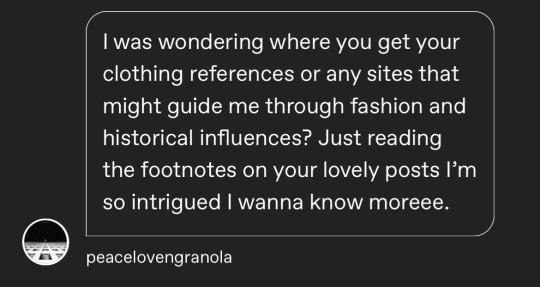
@peacelovengranola had a really great question over on my Lord Stark piece that I wanted to answer as a post, since this might get lengthy.
Full disclosure: I am not a historian or anything related to that, I'm just a hobbyist costume geek who loves clothing and history. Please don't consider this The Definitive Guide To anything, just suggestions of what works for me and where to get started when digging in to (specifically Western European & North American) fashion.
For all of my Semi-Historical Stark pieces, my primary sources are artwork from the period (and in some case photos and extant fashion pieces), as well as books. Loooots of books. Once I hit the later 19th century, things like fashion ads, department store catalogs, magazines, and pattern books are incredibly useful tools for fashion history references.
(I recommend avoiding fantasy art depicting mythological folks {gods, the Saints, King Arthur etc} because the fashions get a little, well, fantastical, heads up)
Because there's just so much knowledge out there, and it's intimidating as heck, I go for broad strokes first ("What era do I want to learn about?") then I start carving out specifics.
"Specifics"?
Lord Stark's overall look is from the Renaissance, sure, but specifically England in the 1560s. He's also meant to be a nobleman, as class distinction (and career) is important to how he'd dress, the materials he'd wear, decorative motifs etc etc. While it seems like a lot to keep in mind, think of it as adding filters to a Google search, to help you narrow your focus (and save your sanity).
"But Beck, how do I know a site is legit with their info?"
Look for sources! Any article should list the sources or books they're referencing. Want to avoid Amazon? Thrift used copies or shop directly from the publisher. Can't find physical copies of them, or the copies that do exist are just obscenely expensive? Take advantage of sites like LibGen, Archive.org, and Hathitrust to read digital copies! Or search for Epubs and PDFs, friend!
(Though I would never, ever suggest you illegally download a book that's stupidly overpriced on Amazon or eBay 😶 That would be so wrong and mean to the seller 😶 {please DO support small businesses!})
(Also hilariously, Karolina Żebrowska answered a similar question last year so go watch/read her suggestions too, she actually knows way more than I do.)
Stuff I've been reading:
The Costume Institute at The Met
Fashion History Timeline
A Dictionary of Costume and Fashion - a definite (and cheap, yo!) must if you just want to know wtf something is called, which makes searching for specific examples a breeze.
Reference Book of Women's Vintage Clothing: 1900-1909
The Mode in Costume
Medieval Costume in England and France: The 13th, 14th, and 15th Centuries
European Civil & Military Clothing
Fashion in the Middle Ages
Vintage patterns you can read and reference. These are outstanding if you want to see what regular folks were making for themselves.
Example of a Sears Roebuck catalog from the 20's
Pinterest is a pretty good resource in a pinch, as you can often find fashion albums filtered to specific dates in history. Be aware that they might not always be accurate (unless they're dated on the photo, like with some fashion plates), so you may want to cross-reference as well.
--
This is just a super small sampling of what's out there to read! Don't be afraid to indulge in what you want to learn about either. If you just want to learn about Victorian bustle trends, or Black American hairstyles of the mid-1960s, or the garments of 12th century French peasants, go for it.
If you want to go into even further detail (and if you're a fellow artist), look up how period garments were worn, and the various underthings people wore as well. Get real extra with it and read up on where/how they lived, and their daily lives.
The sky's the limit here, have fun with it 👍 I hope this layperson's primer helps, and makes it a little less daunting.
39 notes
·
View notes
Photo

MY RALPH OUTLET
by Réginald-Jérôme de Mans
A recent conversation with Ivy revisionist Berkeley Breathes led to me a revelation. The relationship between Prep and Ivy, I ejaculated, is that of birds and dinosaurs. Just as my mom’s evil African Grey who used to eye me balefully was the collateral heir to the thunderous hundred-foot-long Ninjatitan zapatai (they did it, they really gave an animal the scientific name Ninjatitan, so prep is the existing offshoot of a look that otherwise died in the 1970s, or 65 million years ago in fashion years. Existing Ivy exponents are no dead clade walking, but as authentic as rumored plesiosaurs subsisting in Loch Ness: impossible, ridiculous and fascinating latter-day inventions. What actually and organically has continued to evolve following the death of Ivy is messier, sloppier and more casual, less precise and thus more adaptable… and may even owe its survival to its adoption and adaptation by American’s most important designer, Ralph Lauren.
There’s a lot to unpack from the free-with-purchase-at-these-fine stores Polo-branded baggage of the above paragraph. As I’ve written in earlier pieces, reading Richard Press’s Threading the Needle and the interesting if misbegotten Ivy Style museum exhibition monograph helped sharpen the picture of what Ivy style is perceived to be now (the old Take Ivy book helped provide a more contemporary picture of it at the time that Ivy was on its last legs). Youthful as it purported to be (its very name localized it to college years at privileged college campuses), Ivy still included aspirations to a kind of maturity: grown-up clothes in the form of tailored jackets, and sobriety’s leash itself, the necktie. Even if decades ago such clothes could exist in more casual registers by nature of their materials or patterns (J. Press’s famous tweeds, for instance), they existed as prescribed forms of uniform at prep schools and (at least as a de facto uniform) universities at midcentury. From the 1960s, student rebellions of various forms threw off such uniforms among young people. At my own prep school, legend had it that protestors against the old coat-and-tie uniform even came to school naked (this was several years before it also went co-ed). Legend? I suppose if I had wanted to investigate, I could have asked teachers who had been at the school since shortly after graduating from it in 1952, or the octogenarian who had taught there 60 years straight since 1929.
The death of a frankly prosaic tailored uniform opened up two planes of possibility: one for the more casual sorts of Ivy play clothes that younger students had worn that were less restrictive and less costly than tailored clothes; and another plane of imaginary romance and dash for myths to write themselves. Ralph strode in and straddled them both, and preps welcomed him. No more did the privileged student have to order jackets from LL Bean or Barbour, piqué shirts from Lacoste and loafers from Bass or Brooks Brothers in New York. Instead, Ralph’s shop-in-shops in better department stores across the country offered a one-stop experience for an entire look immersed in the sort of generalized Anglophilia and muddy horsiness (from the brand name Polo on down) that put America’s aspirational middle classes at ease in their social insecurities.
1980’s The Preppy Handbook gave us an informative snapshot of its time and this attitude: Polo items infiltrated the various shots of preppy accoutrements, as do the various carefree, confident corner-cutting that began to mark its difference from dead Ivy: moccasins held together with duct tape and a lack of any care about fit, and later, provenance: the book points out to us to notice the sloppy hemming job on a grown-up Prep’s suit pants, and tells us the credentials of former Prep hall-of-famer Lisa Halaby are now in question for marrying a man “whose blazers fit perfectly”: the incredibly elegant, Camps de Luca-clad King Hussein of Jordan. Preps were happy to wear Izod’s licensed Lacoste shirts instead of the original, and over the decades to wear Ralph as he expanded into a brand supported (according to biographer Michael Gross) by its outlets, and later Ralph pastiches like Tommy Hilfiger. The populations wearing prep changed in appearance: prep schools themselves became somewhat more inclusive, at least in appearance, and other populations appropriated aspects of the look that Ralph popularized, even if old curmudgeons like Lewis Lapham missed no opportunity to sneer at Ralph for now making expensive copies of traditional garments in cheap factories.
I used to share that rather snobbish sentiment, before realizing that for better or worse Ralph captured all the problematic romance of nostalgia without the boredom of latter-day Ivy irredentists, arguing over details of collar roll and shoulder construction irrelevant to everyone but themselves. One writer in the Ivy Style monograph suggested that Ralph started his business in reaction to seeing Brooks Brothers (where he had sold ties) losing its way. Rather, both Ralph and Brooks Brothers were reacting to changing times that killed Ivy as anything but a historical look. Ralph moved into fantasy, bringing elements of 1930s English dandyism (too flamboyant for Ivy to have espoused even in an abdicated, morganatic manner) and of other senses of loss: lost colonial empires through exotic and safari imagery and lost WASP fortunes and heritage in the decoration and presentation of his boutiques, most infamously in the conversion of Manhattan’s Rhinelander Mansion into his New York flagship. His boutiques around the world followed its inspiration. Even if their décor was ersatz copies of its old wood, the Ralph Lauren staff knew how to trigger that strange sense of transport which is momentary acceptance in prep enclaves, like when a beblazered boys’ chorus began singing carols in the gallery of one boutique during our holiday browsing.
He made prep more interesting, more visible and accessible, and more new than its traditional retailers had. In the beginning, at least, he probably kept some in business, too. Such is the case with an amazing vintage handmade Fair Isle sweater, made in Britain for Ralph Lauren in traditional wool with traditional heathered colors… and metallic lurex, more commonly associated with punks, giving it gold highlights. A deep dive looking for handmade Fair Isle sweaters turned up this example (a Scottish knitter friend told me that if I wanted a new handknit sweater, I had better pick up “a pair of pins” myself, since even one of the famous handknitters was photographed using Shima knitting machines). It made one of the staples of prep (as the distant, extant vestige of Ivy) novel, arresting, yet coherent. Even if, 35 years on, the Ralph Lauren empire has retrenched, its brand and manufacturing approaches called into question, what he does today is still the heir to the best, or most redeemable, of what prep was.
17 notes
·
View notes
Photo

"Shut the door. Have a seat.” (see what I did there? 😉). Grab a Manhattan or a Gimlet and enjoy 10 Years of Mad Men Style on DefunctFashion. Ten years ago today Mad Men premiered on AMC. I distinctly remember flipping through channels and stumbling upon this show about 15 minutes in to the first episode. Being in fashion school at the time I was immediately engrossed by the costumes of Janie Bryant - a super star among costume designers. The characters come to life through their garments before they even speak. From the prim waist cinching dresses of Betty Draper (Francis) to the mod derrière grazing Pucci-esque shifts of Megan Calvet Draper the show is a candy store of glamorous (yet realistic) fashion of the 1960s. I am going to be sharing my favorite extant garments from the 1960s - pieces that I always imagine my favorite ladies of Mad Men wearing. #madmen #10yearsofmadmen #madmen10thanniversary #madmenstyle #janiebryant #costume #televisioncostumes #costumedesign #costumedesigner #fashion #fashiondesign #fashionhistory #historicfashion #historicalfashion #historicalfashionblogger #1960sfashion #defunctfashion #1960s #vintage #vintagefashion #joanholloway #bettydraper #peggyolson #amc (at Sterling Cooper & Partners)
#fashionhistory#costume#1960s#fashion#historicfashion#vintagefashion#costumedesign#madmenstyle#madmen10thanniversary#peggyolson#madmen#1960sfashion#joanholloway#amc#vintage#historicalfashion#10yearsofmadmen#televisioncostumes#historicalfashionblogger#bettydraper#defunctfashion#costumedesigner#fashiondesign#janiebryant
17 notes
·
View notes
Text

White Lace Corset, 1960-1969, French.
Designed by Simone Perele.
Victoria and Albert Museum.
#lace#corset#1960#1960s#white#1960s corset#1960s France#french#Simone perele#V&A#extant garments#undergarments#1960s extant garment#1960s undergarment
48 notes
·
View notes
Photo
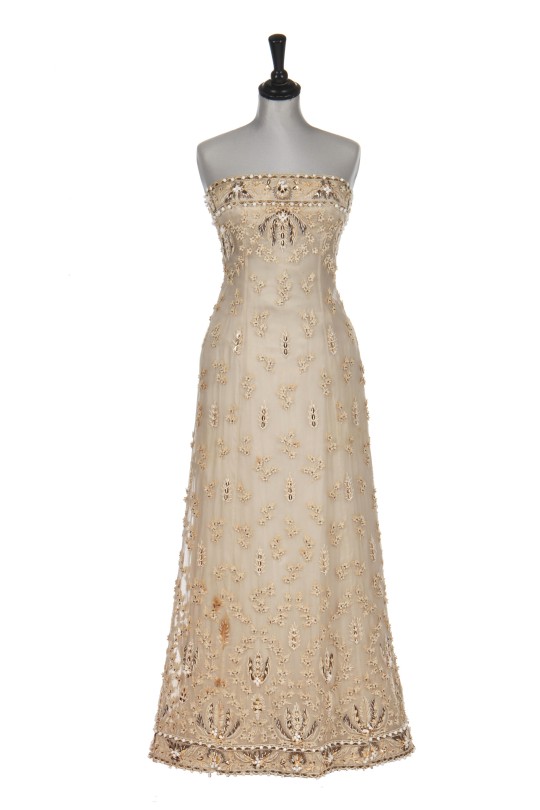
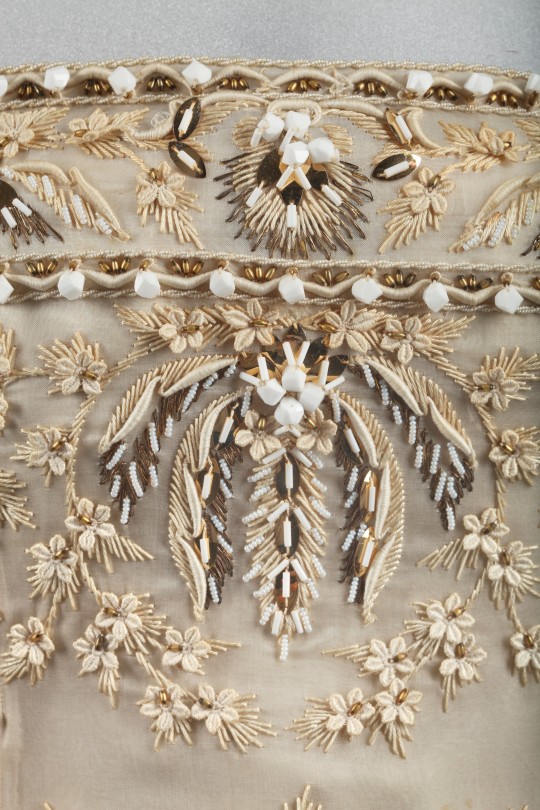


Dior evening dress, 1964
From Kerry Taylor Auctions
#20th century#60's#1960's#extant garments#dress#gown#evening dress#dior#christian dior#marc bohan#haute couture#vintage
686 notes
·
View notes
Text
Hyperallergic: Botticelli’s Venuses and Our Enduring Need for Beauty
Sandro Botticelli, “The Birth of Venus” (1444 or 1445–1510) (all images courtesy Museum of Fine Arts, Boston)
In the 1960s, my childhood bedroom was covered with images of Botticelli’s “The Birth of Venus” torn from an art book in my parents’ library. About 20 years later, I encountered the painting itself at the Uffizi in Florence. I was not as preoccupied with the image then, standing in front of it in the museum, as I had been as a young girl, though I still loved it; nor was I as preoccupied with it then as I am now, as I contemplate aging in representation and wonder what a goddess of love, passion, and sex would look like without the bloom of youth.
The Museum of Fine Arts in Boston has brought one version of Botticelli’s Venus to the United States. The exhibition, Botticelli and the Search for the Divine, presents the largest number of the artist’s paintings shown together in America to date — 15 by Botticelli — along with several by Fra Fillipo Lippi, with whom he studied.
My interest in Botticelli began in the 1960s. Interestingly, the images of Venus that I had plastered all over my bedroom bore a resemblance to some of the poster art and album covers I already knew. Botticelli embraced perspective, but his figures remained less volumetric than those of his cohorts. These slightly flattened figures were outlined and painted in pastel colors, which were at home with images of Twiggy and rock and roll posters of Bob Dylan. And of course, the one thing I didn’t know in the ’60s based on those reproductions is that Botticelli’s Venus is nearly life-sized. Confronted with her at the MFA, she looks utterly contemporary. “The Birth of Venus” (which is not in the MFA exhibition), according to the AMA, was the first life-size nude painted in 400 years.
Sandro Botticelli, “Venus” (c. 1484–90), tempera on wood panel
Looking back, one might say that, despite the utopian impulses of the baby boom generation and the strength of the counterculture — which turned out to be an anomaly rather than a generational phenomenon — the Enlightenment was coming to an end. The ’60s were a period of serious social and political upheaval that included the United States government sending 18-year-olds to a small country in Asia to be shot, the civil rights movement gaining momentum, the feminist movement gaining momentum, Paul De Man and Jacques Derrida meeting one another at Johns Hopkins University for the first time and preparing to unleash deconstruction on academia in America, not to mention multiple high-profile assassinations, including that of the president of the United States. If anyone believed there was a linear progression to history, one through which humanity slowly but surely improved, the Holocaust in Europe suggested that this might be wishful thinking. Yet, contrary to what one might have expected, the children of that generation were to become the rebellious and idealistic counterculture: the rock-and-rollers, the hippie commune dwellers, the antiwar protesters. Retrospectively, this looks like the last gasp of belief in incremental but progressive change toward a better future through the attainment of ever greater knowledge, although, ironically, we could argue that the death of Modernism brought with it an opening for the voices that were previously marginalized or silenced and was in fact further progress and an expansion of Enlightenment humanism.
By the time I arrived at graduate school in the early ’80s, beauty was dead and postmodernism had supplanted the idea that a grand narrative with overarching explanatory power was possible or even reasonable. Relativism helped displace the notion that the white European male represented a universal experience. In the arts, deskilling was becoming more prevalent. Conceptual art was often without an object and had an afterlife in offhand black-and-white photographic documentation. It makes sense that the abandonment of beauty would accompany deskilling. Beauty generally, though not exclusively, relied on skill for its creation.
During the Renaissance, painters like Botticelli were influenced by the belief that earthly beauty was connected with the divine. Obviously, the more skilled the artist, the more precisely he or she could imbue an image with a beauty that brought it ever closer to divinity by virtue of beauty alone. Botticelli’s early works were of mythological figures. Yet even with mythology as subject matter, before he came under the influence of the Dominican monk Girolamo Savonarola and turned to more overtly religious content, the drive to represent Venus or Minerva as beautiful was not only about the viewer’s pleasure but about creating a connection to something mystical, something beyond an actual representation on the panel or canvas.
Sandro Botticelli, “Pallas and the Centaur (1444 or 1445–1510), tempera on canvas
In the post-studio program at Cal-Arts, beauty had become a dirty word. Yet it seems to me that our attraction, as a species, to beauty is somehow hardwired. One suggestive and seductive theory, articulated by philosopher Piero Ferrucci in Beauty and the Soul, is that the actual standards of beauty evolved to help us distinguish ourselves as a species from other species close to us. We now know that homo sapiens and Neanderthals interbred, so the choice of a high forehead or widely set eyes would encourage us to mate solely with other homo sapiens. Similarly, there are theories that certain types of landscapes became aesthetically pleasing largely because, throughout our evolution, they were key to our survival as a species and therefore came to represent safety as well as comfort. Whatever we choose to believe about this, we should be suspicious that there is something about beauty that is not just pleasurable but immanent in us. It’s hardly an accident that during the Renaissance the idea of beauty was connected to the divine.
There appear to be two extant versions of the Botticelli’s Venus isolated against a black background, in addition to “The Birth of Venus.” I have two photographic reproductions of her painted in this manner. In one, her arms are naked, and in the other, she is wearing a completely diaphanous shirt that is barely noticeable on casual observation. It is this latter version that is on exhibit at the MFA. The wall text reads:
On a narrow parapet, Venus — Roman goddess of love — stands silhouetted against a black background, strongly lit, as if to evoke sculpture. She is nude except for a transparent sleeved garment with a square neckline, parting just below her bust. Her pose comes directly from ancient sculpture and links the work to its immediate source, Botticelli’s famous The Birth of Venus, painted around 1484. Together her beauty and her modest pose express the dual nature of love, as believed at the time: both profane and sacred, sensual love and love for God. Attempting to cover herself, she seems to offer a subliminal warning of the mortal dangers of excessive sensuality. While this particular Venus (and another, now in Berlin) have been attributed directly to Botticelli in the past, some experts today regard then as painted under the master’s supervision by assistants.
While I accept that she is modest, covering her pudenda with a swirl of her head hair, she doesn’t strike me as ashamed of her nakedness. Whether she was painted by Botticelli or under his supervision, this ideal of beauty appears to be the same woman we see in the “The Birth of Venus” and “Minerva and the Centaur” and quite possibly later as Mary with the infant Jesus. It is thought that the inspiration for his Venus was Simonetta Cattaneo. She was the wife of Mario Vespucci and the lover of Julein de Médicis. She died at the age of 27. She was reputedly thought to be the most beautiful woman in the world. It’s interesting to trace Botticelli’s use of this muse through the mythological paintings in which she represents the goddess of love as Venus, wisdom as Minerva, and maternal goodness as Mary. In each case, she represents these ideals through her physical beauty and Botticelli’s ability to render it. In Stephen Greenblatt’s extraordinary book on the Renaissance, The Swerve, he describes the painting of “The Birth of Venus” as one of “hallucinatory vividness” and his Venus as “ravishingly beautiful, emerging from the restless matter of the sea.”
Sandro Botticelli, “Madonna and Child with young Saint John” (1444 or 1445–1510), oil on canvas
If being drawn to beauty inheres in our DNA and helped define us over the course of centuries by keeping interbreeding to a minimum, and if our vision of the beauty of a landscape is tied to our sense of safety, and if we are in fact biologically adapted to that landscape and evolved to be compatible with it, what can we make of the current ugliness not only in politics but in the endless scarring and polluting of that landscape? Have we evolved in its image only to destroy what we have spent centuries evolving to adapt to?
This exhibition of Botticelli’s paintings, so filled with the hopes and ambitions of the Renaissance, seems especially timely in our current deplorable political moment. It serves as a reminder that we need beauty, that we rely on it and that it is a part of us, even if right now that is particularly difficult to see.
Botticelli and the Search for the Divine continues at the Museum of Fine Arts, Boston (465 Huntington Avenue, Boston) through July 9.
The post Botticelli’s Venuses and Our Enduring Need for Beauty appeared first on Hyperallergic.
from Hyperallergic http://ift.tt/2qBVQDe
via IFTTT
0 notes
Text
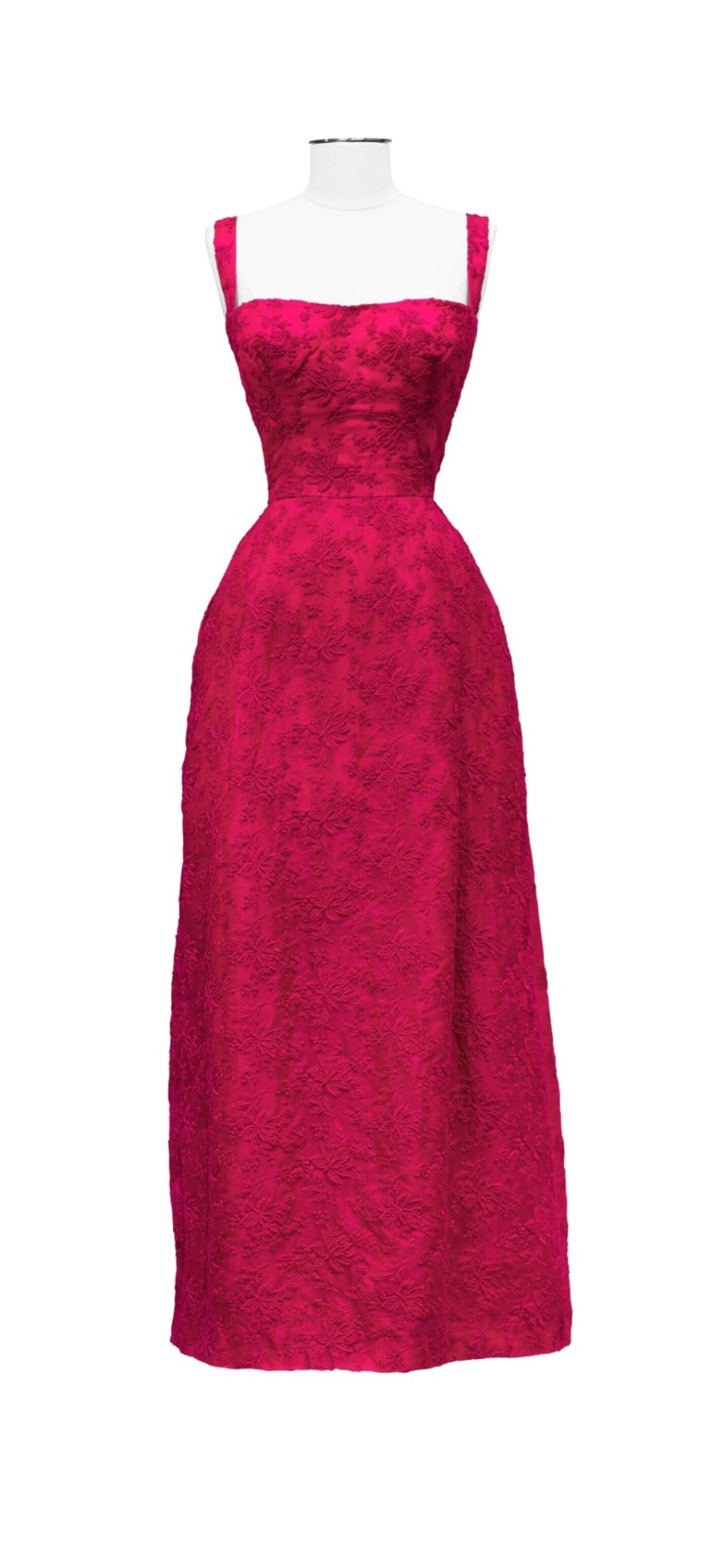

Fuchsia Pink Organza Dress, 1961, Italian.
By Livia.
Worn by Claudia Cardinale at Cannes Film Festival.
Sotheby’s.
https://www.sothebys.com/en/buy/auction/2019/collection-claudia-cardinale-dressing-a-star/livia-haute-couture-1961-dark-pink-organza-dress
#Sotheby’s#pink#organza#dress#claudia cardinale#1961#1960s#1960s dress#1960s Italy#Italian#Italy#womenswear#extant garments#silk#livia#cannes film festival#1960s extant garment
44 notes
·
View notes
Text



Lilac Bra and Suspender Belt, 1960s, French.
By Corsets Charmereine.
Victoria and Albert Museum.
#corsets charmereine#womenswear#extant garments#1960s#1960s bra#1960s suspender belt#1960s undergarment#undergarments#purple#V&A#1960s France#french#bra#suspender belt#1960s extant garment
15 notes
·
View notes
Text
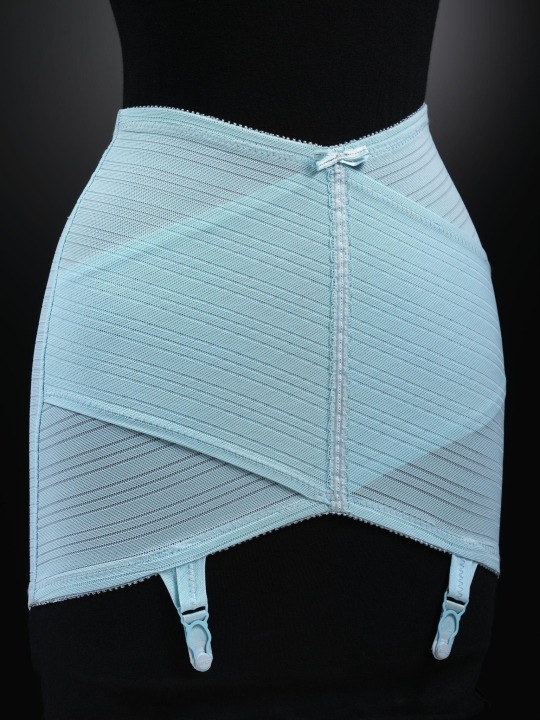
Blue Nylon Girdle, 1960s, British.
Designed by Anne-Marie Lobbenberg for Silhouette.
Victoria and Albert Museum.
#V&A#girdle#silhouette#blue#1960s#1960s britain#1960s girdle#undergarments#1960s undergarment#extant garments#1960s extant garment#womenswear#British#nylon#Lycra
14 notes
·
View notes
Text

Pink Polkadot Cotton Bra, 1960s, British.
Victoria and Albert Museum.
#bra#Polkadot#cotton#pink#womenswear#extant garments#1960s#1960s bra#1960s undergarment#undergarments#1960s extant garment#V&A#1960s britain#British
17 notes
·
View notes